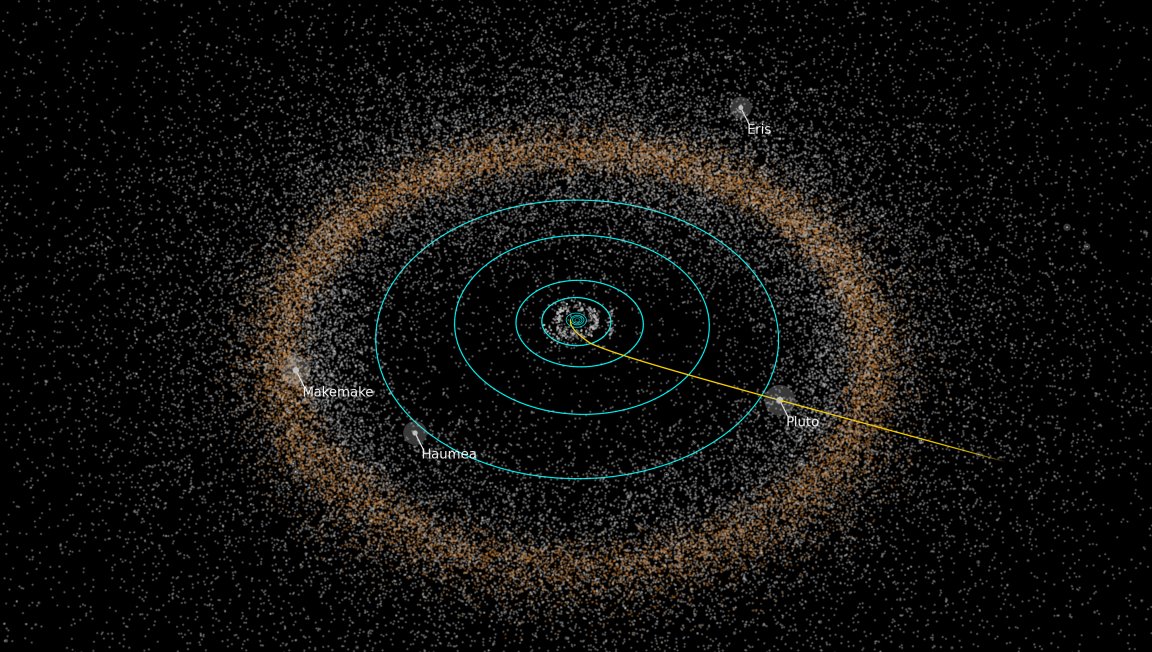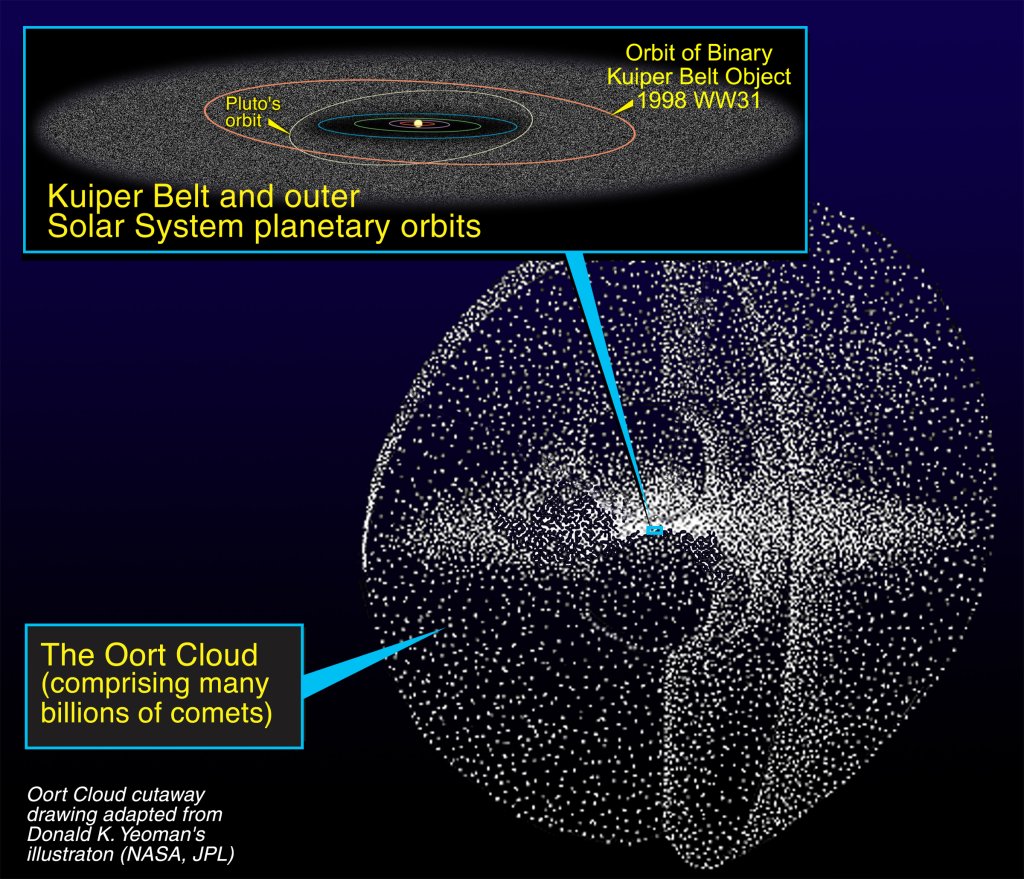
New Horizons may have completed its fly-by of Pluto but its mission is not yet over. NASA has found an object, called 2014 MU69, in the Kuiper Belt that New Horizons could reach with the fuel it has left.
MU69 is considered Potential Object #1 (PT1) and is “a great choice because it is just the kind of ancient KBO, formed where it orbits now, that the Decadal Survey desired us to fly by,” said Alan Stern, New Horizons Principal Investigator. MU69’s orbit is about a billion miles past Pluto and it is a different type of Kuiper body than the dwarf planet. It is estimated to be almost 30 miles wide—the span the city of Los Angeles covers in latitude. This distance is 10 times the size of typical comets. MU69 is 1,000 times more massive than its typical comet neighbors yet only about 1% of the size of Pluto.

Illustration of a KBO encounter
NASA/JHUAPL
The New Horizons team will officially recommend their target in their mission extension proposal to NASA, scheduled for review in 2016. However, the spacecraft, still shuttling through deep space, needs to be put on a trajectory towards its target before the year is up to maintain the integrity of any future objectives. New Horizons will move into place by early November to reach MU69 by the expected date of January 1st, 2019. Significant delays from this outline could seriously risk the success of the mission.
The New Horizons spacecraft was originally fueled for travel beyond Pluto, the main concern is that it has enough for the scheduled path and any unforseen anomalies, should they occur. The craft should be able to power itself for several more years and was also developed to function in even less light than available at the distance MU69 is from the Sun. The added distance should also be no disparate issue for the communication system put in place.
The Kuiper Belt is an elliptical region at the edge of our solar system containing trillions of icy, small objects and dwarf planets. Dwarf planets, the most famous of which is Pluto, are larger than comets but too small to be considered planets. At the conception of the mission, researchers had hoped to study not only Pluto but also reach a Kuiper Belt Object as they are considered to offer a frozen, and so well-preserved, portrait of to the solar system’s formation 4.6 billion years ago.

In the meantime, New Horizons is (and has been) sending back data from the Pluto encounter and will be for some time, given the great transmission distance and that it is equipped with technology that was state-of-the-art 10 years ago.
Source: Johns Hopkins University Applied Physics Laboratory
Images: NASA/JHUAPL Solar Views